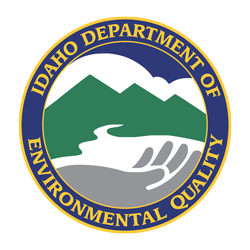Once an inspector determines that a violation occurred, the next step is to determine the appropriate course of action. This is based on several factors, including the number of previous violations, seriousness and types of previous violations, and willingness to comply. Actions can include, but are not limited to, the following:
- Issuing a warning letter
- Issuing a notice of violation
- Referring the case to the Attorney General’s office for civil or criminal enforcement
- Referring the case to other relevant local, state, or federal enforcement agencies for enforcement consideration
In the case of air quality violations only, inspectors also have the option of immediately issuing a field notice of violation (FNOV). An FNOV is intended to respond to minor violations or visible emissions, open burning, and fugitive dust requirements. The inspector may assess a minimum base penalty of $250 and increase amounts if the violation occurs during a declared air pollution emergency or in an air quality nonattainment area.
This accordion will not appear on the screen
A warning letter is an informal tool for gaining compliance without resorting to a more formal method such as a notice of violation. Warning letters inform the responsible party of apparent deficiencies or violations and request corrective actions within a certain time. An inspector may choose to issue a warning letter to address violations that are few in number, minor, and easily corrected in a limited time with minimal oversight by DEQ.
A notice of violation (NOV) is DEQ’s formal legal means of informing responsible parties that violations of rules or permits have occurred. An NOV includes a listing of the violations at the facility, an assessed penalty amount for each violation, and a description of the procedure for negotiating an agreement designed to return the facility to compliance in a timely manner.
After the NOV is issued, a compliance conference usually follows. Representatives of the facility and DEQ meet to review and discuss the apparent violations and settlement alternatives. When the parties reach an agreement, a consent order is drafted outlining corrective actions to be taken, time schedules to complete requirements, and terms for payment of a penalty, if applicable. Under Idaho’s Idaho Environmental Protection and Health Act, violators are subject to civil penalties up to $10,000 per day per violation.
DEQ generally has 60 days from the issuance of the NOV to reach a resolution. If an agreement cannot be reached, DEQ may refer the case for a civil enforcement action through the Office of the Attorney General to compel compliance, penalty payment, and other injunctive or monetary relief deemed appropriate.

